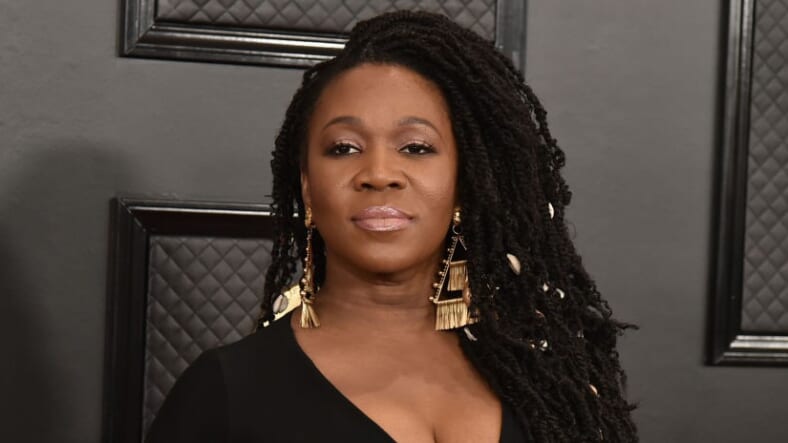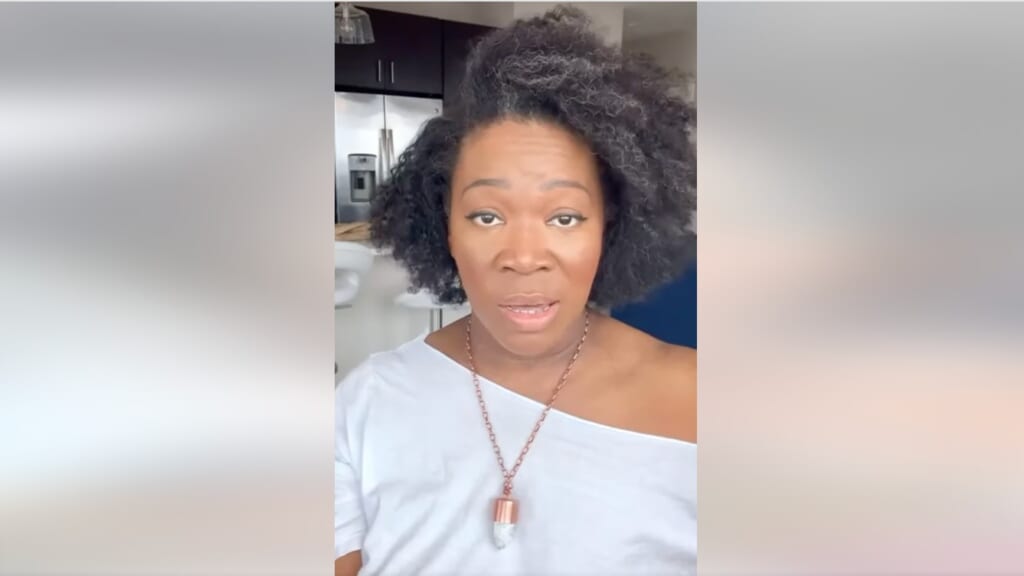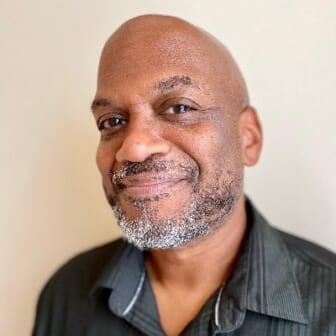COVID-19: Alberta doctors, mayors react to Kenney removing vaccine passport, restrictions
By Kaylen Small Global News
Posted February 8, 2022
WATCH: Premier Jason Kenney says Alberta's vaccine passport will end almost Tuesday at midnight and most other big COVID-19 health rules will be gone in three weeks from now. Dan Grummett, Tom Vernon and Morgan Black have team coverage on what is happening, how the health-care system is doing and how Albertans feel about the changes.
Doctors are calling health measure removal premature as hospitalizations remain high and elected officials are seeking clarity after Alberta Premier Jason Kenney announced plans to lift COVID-19 restrictions in phases on Tuesday.

READ MORE: COVID-19: Kenney announces Alberta vaccine passport program ending at midnight
“It’s time for us to learn to live with COVID-19,” he said at a press conference, listing the challenges of the pandemic: disrupting livelihoods, dividing people and hurting mental health.
“It’s time to let kids be kids.”
When the clock strikes midnight
Kenney said the restrictions exemption program has “outlived its useful purpose,” announcing that after Feb. 8 at 11:59 p.m., it is done — citing what he called declining hospitalizations.
Alberta
Mandatory masks for kids 12 and under will end on Feb. 13 at 11:59 p.m.
Other changes will follow as March arrives.
READ MORE: Decision on Alberta’s vaccine passport expected this week as province records 39 COVID-19 deaths Monday
“None of this is an end to COVID-19. New variants will arrive, and we will still see times when cases are higher in the province,” Kenney said.
“We will likely also see times when there is additional pressure on the hospitals. But restrictions, mandates and those kinds of interventions will not and must not become a permanent feature of our lives.
“We are well-positioned to live with this virus, as we do with many other infectious diseases,” he said.
Think of the hospitals
Dr. Noel Gibney, professor emeritus in the department of critical care medicine at the University of Alberta, said restriction removal is premature.
READ MORE: Alberta NDP Leader Notley says Premier Kenney is pandering to COVID-19 protesters
“What we’ve heard today is wishful thinking and an element of COVID denial where the government is saying, ‘Really, this isn’t a problem anymore,’ while we still have a major Omicron surge causing pressure on our hospital systems,” he said.
“The numbers that Mr. Kenney presented today were of active cases in a system where the testing is really only of a tiny proportion of the number of people that actually have active COVID infections in the province at the moment, and so I think to even discuss those numbers, it’s misleading.”
The announcement is sending the wrong message, Gibney said.
“COVID is far from over… Our health-care system is still under severe stress,” he said.
“I think we need to get our hospitalizations significantly down from where they are now… We’re still running more patients in our hospital beds than we ever have before in any of the other surges.”
READ MORE: Kenney commits to lifting COVID-19 restrictions as Alberta highway protests continue
There are currently 1,623 people in hosptial with COVID-19, according to Alberta Health, with 129 in intensive care.
“If we look back at some of the previous waves, the government used hospitalization numbers of 400 or 500 to make decisions about what public health measures would be added or removed,” Gibney explained.
“We’re actually significantly above those numbers now, and our system remains under profound pressure.”
READ MORE: Two years into pandemic, effects of COVID-19 on youth mental health a growing concern
Gibney thinks it’s important to change restrictions as needed.
“I don’t think we need to stay fixed with significant restrictions all the time. But once and when our hospital systems actually settle out and the pressure is relieved, I think that the restrictions should also be relaxed,” he said.
“But we need to be prepared to consider reintroducing them if, at some point later in this year or some other time in the future, we get another significant surge that puts people at risk.”
‘Still at the peak’ of hospitalizations
Dr. Stephanie Smith, University of Alberta Hospital physician and infectious disease specialist, said everyone recognizes that people are tired, but health-care workers also need to ensure they can provide safe and responsive care to all Albertans.
“We’re trying to manage the COVID cases, and we’re trying to still provide all the other services, but the reality is that we’re not up to 100 per cent for our surgeries,” she said.
“All those poor Albertans, there are many still waiting for their elective surgeries and to have all these restrictions removed with the possibility of having some increased transmission and maybe more hospitalizations, that’s just pushing those surgeries further down the line, which is not what we are trying to achieve.”
2:01 Doctors put effectiveness of Alberta’s Restrictions Exemption Program
Smith said removing the vaccine passport is the “least worrisome restriction that has been removed.”
“When we were in the Delta wave, then it certainly provided some degree of protection for those who were fully vaccinated… but we know that with Omicron, there is less vaccine efficacy, and so I do think that the utility of the REP program is probably not as robust as it was,” she said.
“So I guess I’m not entirely surprised that that was removed.
“Some of the other recommendations, even in Step 1, seem a little bit surprising, I guess. Removing too many restrictions at once, I think, may make it a little bit more difficult for the health-care system to try to recover since we’re really still at the peak of our hospitalizations.”
Wanting clarity
Calgary Mayor Jyoti Gondek said people need time to digest the information, of which she said she and Edmonton’s mayor were given a preview. She noted the end of the REP means the end of the city’s Vaccine Passport Bylaw.
“Here’s the thing that’s the most confusing to me: the restrictions exemption program has been lifted… However, we just heard very clearly from the minister and the premier that alcohol consumption time cut-offs and closing times for restaurants are still under the restriction guidelines,” she said.
“I’m pretty sure that the hospitality sector just got the exact opposite of what they wanted. Giving them more capacity doesn’t help them with the issue that they clearly stated was the service that they can actually offer.
“I’m looking forward to getting some clarity.”
READ MORE: COVID-19: Medical experts, restaurant owner raising concerns about lifting restrictions in Alberta
Gondek wants to collaborate with the province to advocate for citizens’ needs.
“I would hope that we can have meaningful dialogue before Stage 2 comes into play,” she said.
“I’m especially interested in making sure that the channels of communication are open should we start to see hospitalizations increase and case numbers increase. This is a very fluid situation, and we need to make sure that our partners are able to enter into dialogue with us as we both need to.”
Nobody is happy
Coutts Mayor Jim Willett said he was hoping for more from Kenney’s announcement and said it likely won’t help resolve the impasse at the border where people are protesting restrictions and vaccine mandates.
READ MORE: Tow companies reluctant to haul away vehicles hampering Alberta border blockade: RCMP
“The premier’s an excellent negotiator in that nobody’s going to be happy with what he just announced. It’s either going to be too much or not enough, and it’s happening too soon or it’s not soon enough,” Willett told The Canadian Press.
“I don’t anticipate that, no, not for the time being, and leaving masking in place until March 1 is not going to make anybody happy either,” he said.
“Anybody in the protest group or in rural Alberta is probably not going to be happy about that.”
READ MORE: COVID-19: Alberta politicians react to possibility of premier blocking health policies
Edmonton Mayor Amarjeet Sohi said he would not be available for comment until Wednesday but has previously said health rules must be based on scientific evidence and not put vulnerable people at risk.
– With files from The Canadian Press
COVID-19: Edmonton, Calgary school boards weigh in on Kenney dropping mask mandate for kids
In a letter to school authorities, Education Minister Adriana LaGrange outlined the impact that relaxing COVID-19 restrictions will have on schools and students.
“I have been encouraged to see a downward trend in the number of Alberta schools shifted to at-home learning over the last few weeks,” she said.
“At the peak of the fifth wave, there were 29 schools that were shifted to at-home learning, and today, only seven of the over 2,500-plus schools in our province remain learning at home.”
LaGrange said the masking requirement that will be removed effective Feb. 14 will apply to any students in schools or on school buses. Masking will still be required for adult staff and drivers.
“At this time, prevention measures, including cohorting, as well as enhanced cleaning and sanitization, will remain in school environments,” she said.
READ MORE: COVID-19: Alberta doctors, mayors react to Kenney removing vaccine passport, restrictions
The Calgary Board of Education told parents Tuesday night: “We know families have many questions about this announcement and what it means for their child. In the next few days, we will review our health measures in view of these changes.”
The Calgary Catholic School District said all health measures in its buildings will stay in place until further notice.
CCSD spokesperson Felicia Zuniga said the senior administrative team will be working on “a plan of action” in response to the province’s announcement.
In a series of tweets, Edmonton Public School Board chair Trisha Estabrooks said the province’s announcement came as a surprise to the district.
“School divisions were not consulted on this shift,” she wrote. “If we were, EPSB would have shared the desire to move slowly, to listen to parents, to listen to boards.”
However, she emphasized school divisions have no authority to require mandatory masking.
“I know this will deeply upset many,” Estabrooks wrote.
“With low vaccination rates in kids age five to 11, this definitely feels like we are taking away a key layer in the approach to keep students and staff as safe as possible.”
In a media update Wednesday morning, Estabrooks said many young students are still not vaccinated and removing masks now is too fast.
“Parents have had a lot of faith in our back-to-school plan at Edmonton Public Schools and I’m hearing a lot of frustration and a lot of concern. And I just want to say to parents and to staff that we hear you. This is a lot of change and it’s happening very quickly.”
The Edmonton Catholic School Division did not have anyone to comment Tuesday evening, but said it is committed to reviewing and updating its back to school plan in response to updated direction from the government.
“The health, safety, and well-being of our students and staff continues to be our number one priority,” the ECSD said in a statement.
The president of the Alberta Teachers’ Association (ATA) said he is concerned about the speed at which the mask mandate is being lifted.
“We’ve consistently heard from government and health officials that schools reflect the COVID positivity rate in the community. We heard yesterday that the positivity rate is still well over 30 per cent. So why remove the mask mandate so quickly when community spread is not yet decreased significantly? What will be so different next week from this week?” Schilling said Wednesday morning.
He said the ATA was not consulted in the decision, so does not have an indication as to why the mask mandate is being removed so quickly. Schilling said he would like to see the data the government is using to make these decisions. He would also like to sit down with government to give them an indication of what those in schools are feeling and experiencing.
“A return to a normal school setting is something that everyone is hoping for. However, we do not want a hasty decision to put us a step backwards in just a few weeks,” he said.
“We strongly urge the government to take a more cautious approach regarding the removal of safety protocols in schools.”
Schilling said the ATA will look at all of its options in order to make sure teachers are working in a healthy and safe atmosphere, but added their hands are somewhat tied given the education minister’s letter informing school boards they don’t have the power to override the mask directive.
Support Our Students Alberta tweeted the changes Kenney announced are “unarguably reckless and illogical.”
“Once again, the UCP prioritizes politics over the health and safety of students,” the group said.
“To abruptly remove masks from schools on short notice, without school board consultation, risks throwing schools into chaos yet again.”
Reaction from parents at one school in Edmonton was mixed as they dropped their kids off for class Wednesday morning.
“I am very concerned about this because they’re little and I don’t want them to be sick, obviously. I think masks can protect them,” said Barbara Yang, who has two kids: one in Grade 4 and another in Grade 6.
She said masks have made a difference and has suggested her children keep wearing them after Monday.
Sienko Ikhabi said he has conflicting feelings about the mask decision.
“I think they serve a purpose but also for the kids, I also understand they probably find it difficult to have the masks on all day.”
Touqeer Sohail has two kids. He said he will see what happens with case counts, but admits he feels the decision to remove the mask mandate came too quickly.
“I think it might be better if we wait another month or so,” Sohail said. “I would like them to continue wearing masks but those are kids, so once they are with other kids, you never know.”
Harman Rao said he’s not happy with the decision and has asked his child to keep wearing a mask while at school.
“For me, that is a big issue,” Rao said. “I said, ‘You have to wear a mask every time.'”
— With files from Caley Gibson, Global News.
Alberta business group slams decision to eliminate COVID-19 vaccine passport program
Alberta’s Restrictions Exemption Program, or REP, was introduced last fall in an effort to curb spiking case rates and encourage vaccination. It requires Albertans to show proof of double vaccination or a negative rapid test result to obtain entry to businesses operating under the program.
The program is the first to go as part of the province’s three-step plan to lift public health restrictions.
“The restriction exemption program has served its useful purpose. It has done its job,” Kenney told a news conference.
But chamber president and CEO Deborah Yedlin said that public health measures like the REP and masking remain critical to ensuring people feel comfortable dining at restaurants, attending sporting and entertainment events, going to gyms and going to work.
“Today’s announcement on the immediate removal of all pandemic measures and restrictions ignores the importance of consumer confidence in our economic recovery,” Yedlin said.
She added the chamber believes that prematurely lifting restrictions could lead to reduced revenues for businesses, as people choose to stay home and minimize the potential for exposure to the virus.
Yedlin also warned of labour shortages due to illness, and a potential increase in infection rates at schools, “sending children and teachers home and disrupting work patterns and productivity for many parents.”
Another industry group, the Alberta Hospitality Association, which represents restaurants and bar owners, wanted to see other restrictions — such as a liquor curfew, bans on live music and billiards, and rules about how many people can be seated at one table — removed before the passport program.
Instead, those restrictions remain in place until at least March 1.
“We’re in favour of whatever it takes so that we can operate our businesses at 100 per cent. If that means keeping the REP, then by all means,” said Ernie Tsu, president of the association and owner of Calgary’s Trolley 5 brewpub.
“They went against all of the stakeholder groups that wrote letters in. They didn’t listen to us at all.”
Earlier Tuesday, at the Rose & Crown in Banff, Alta., Vern Iskauskas said he was awaiting Kenney’s announcement with a mixture of excitement and trepidation.
The owner of the pub and popular live music venue said he welcomes a move toward lifted restrictions, but thinks it’s a mistake to ditch the proof-of-vaccine program first.
“I’m very open to lifting restrictions, I just hope it’s done in the right way,” he said.
“We fear losing some of the loyal customers who have come back to us because they feel safe here. We also fear that if there is a little bit of a spike in cases afterward, which could happen for a variety of reasons not necessarily associated with the REP, that our industry … could be scapegoated again, with further restrictions placed upon us.”
Many other business owners said they feel mixed emotions over the idea of scrapping the passport.
Paul Shufelt, who owns Robert Spencer Hospitality Group, which operates a handful of Edmonton restaurants including Workshop Eatery and Woodshed Burgers, said he knows that if the province removes the mandate, business owners will have the ability to continue checking proof-of-vaccination for their own purposes.
But he said that’s a tough decision to make.
“Probably more than anything, I worry for my staff on the front line, whether we go one way or the other, because those are the people that tend to feel the wrath of angry or frustrated customers,” Shufelt said. “I don’t think there is a right answer, and that’s the hard part.”
“We’re welcoming a return to normalcy, but I understand both sides of it,” said Mark Petros, owner of Nick’s Steakhouse and Pizza in Calgary. “A lot of our customers work at the Foothills Hospital and the Children’s Hospital because we’re close by, and we don’t want to see the hospitals getting overloaded.”
The Edmonton Chamber said before the announcement that it supported responsible health and safety measures that allow businesses to operate while protecting customers, workers and communities
“We would hope that any decision to ease restrictions would be made in consideration of health information and supporting data,” Jeffrey Sundquist, president and chief executive of the Edmonton Chamber of Commerce, said in an email.
Also on Tuesday, Saskatchewan announced a plan to lift all of its COVID-19 restrictions. Starting Monday, the province will no longer require COVID-19 vaccine passports. It is also ending its indoor mask mandate at the end of the month.
Premier Scott Moe said providing proof of vaccination against COVID-19 to enter businesses like restaurants had helped in the fight against spread of the virus.
But he said it also created deep divisions in the province — in effect “two classes of citizens.”
“The benefits of this policy no longer outweighs the costs,” Moe said, adding people should be able to choose whether they get vaccinated or not.
“This government is going to respect that right.”



![A treatise on asiatic cholera / edited and prepared by Edmund Charles Wendt ; in association with John C. Peters [and others].. Credit: Wellcome Collection. Public Domain Mark](https://blogs.bmj.com/medical-humanities/files/2022/02/Steere-Williams-Jacob-Endemic-Fatalism-and-Why-It-Wont-Resolve-COVID-19.jpeg)





